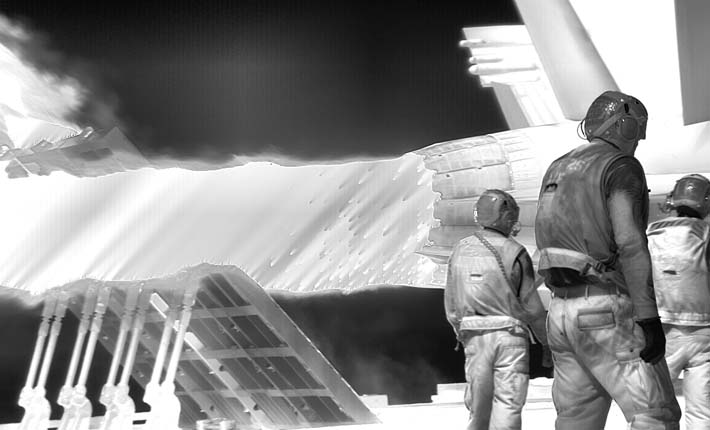Seeing Incoming marked my first visit to the Barbican Centre, which meant a brief, yet anxious period of traipsing around a brutalist labyrinth of concrete in order to find the exhibition space. I don’t think I have ever felt more lost than when I was searching for an entrance in a nearby stern, concrete tunnel, bumping into plenty of irrelevant signs. Fear not, I did eventually find the Curve gallery, and was rewarded with Mosse’s latest body of film and photographical work.
But maybe ‘rewarded’ is not the right term to use to describe what a visitor receives from this exhibition, perhaps even an insensitive one. While it is true that the work in this small semi-circular room is visually stunning, the issue being explored here does not seek to entertain its visitors necessarily, but stimulate careful consideration of the ever-present refugee crisis. There is no doubt that this humanitarian disaster is a theme being worked with by a plethora of artists. Take Ai Wei Wei’s life vest installations at Vienna’s Belvedere palace for example, or his photographic appropriation of the image of the drowned Alan Kurdi that went viral in 2015.
These people appear inhuman, and ghostly, perhaps a reflection of how refugees have often been treated, by the media, by governments and even by us, in our own thinking about the situation.
So how does Mosse’s work at the Barbican differ to other artworks dealing with the same theme? For me, the most striking work at the exhibition was Mosse’s hour-long film. In this black and white film, Mosse used a thermal military camera to capture a variety of scenes from the journeys of refugees and migrants in Syria, Iraq, Afghanistan, Senegal and Somalia. The use of heat map technology in the film means that a viewer’s attention is moved away from the gender, ethnicity, age or emotions of the migrants. Instead they can only be recognized as glowing white bodies moving in a tent-filled landscape or in a wide expanse of sea swarming with boats. These people appear inhuman, and ghostly, perhaps a reflection of how refugees have often been treated, by the media, by governments and even by us, in our own thinking about the situation.
Incoming offers viewers the opportunity to look at the refugee crisis through a lens that differs from what is seen in social media and newspapers. In a dark room, Mosse’s film lets us sit down and really concentrate on how we have allowed ourselves to think about migrants, and the crisis they are trapped in. While realistically, art cannot change the world or fix its problems, if artists can deliver a strong impact through their work, they can allow people to think about the world’s most urgent contemporary issues in a new light.
Fiona Holland
Image courtesy of Richard Mosse

